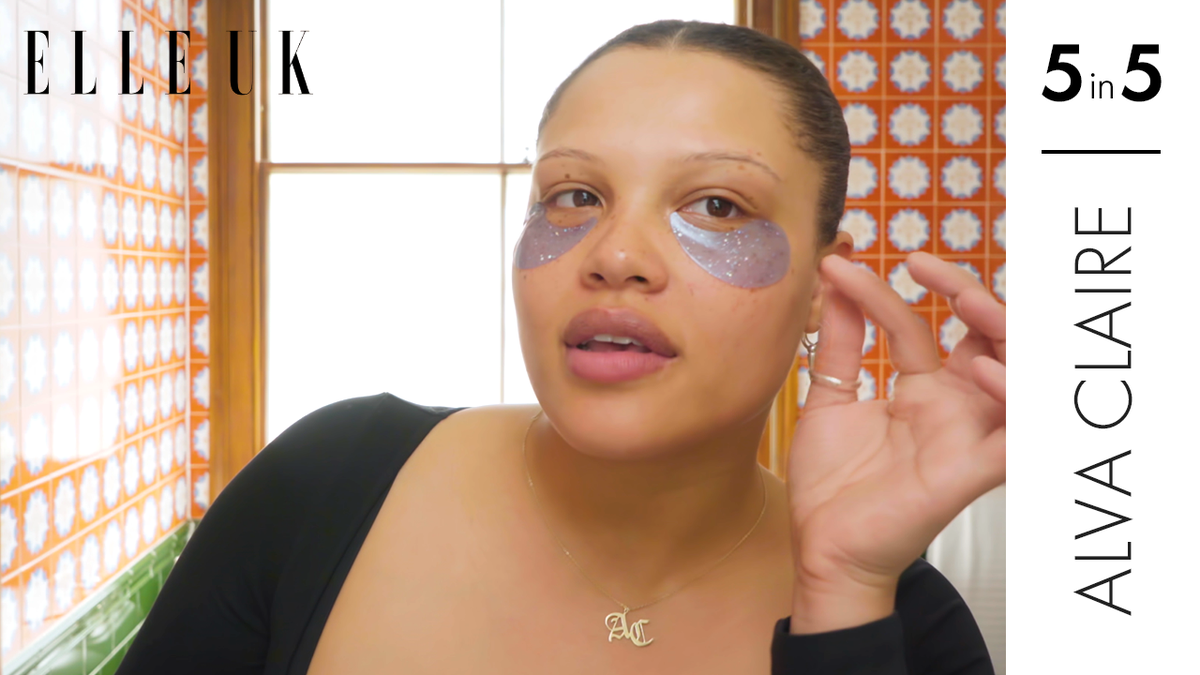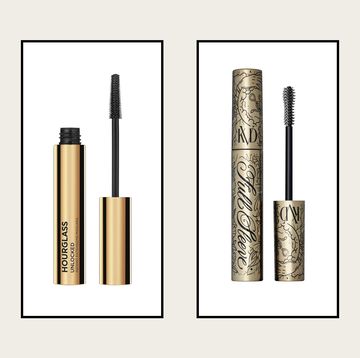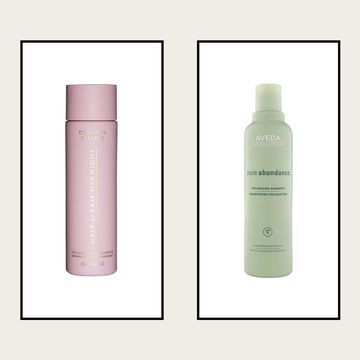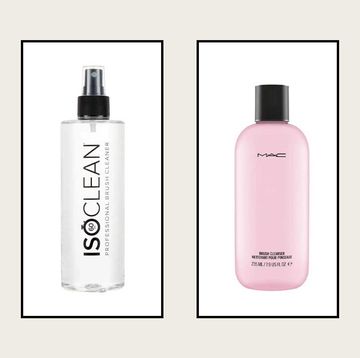We've all been there: Your friend talks you into squeezing in a yoga class between work, a dinner date, and collapsing in bed, but you don't want to lug your mat to your date. You could just borrow a mat from the yoga studio, right? But how clean are those mats exactly? The answer, it turns out, may have you trying to cram a mat into your Trademark handbag.
"Yoga mats are the worst," said Dr. Robert Lahita, a professor of medicine at Rutgers School of Medicine. In addition to his M.D., Lahita also holds a PhD in microbiology, has worked in both infectious diseases and immunology, and has spent many years as a yoga practitioner, so he is particularly well qualified to comment on what lurks in an unwashed yoga mat. According to him, that can include bacteria, fungi, viruses, and more. "A yoga mat is a perfect incubator for many of our skin infections," said Lahita. "The yoga mat is a very fertile source for infection, mainly because people sweat on them and they rarely are cleaned."
Yoga mats are a fairly modern invention, which have helped revolutionize the practice, and, judging by the many women toting them across town, become a fairly chic fashion accessory along the way. But in the world of microbiology, a yoga mat is considered to be a "fomite," which Lahita defines as "basically, an inanimate object used to spread an infection." What that means is that if, for example, someone has ringworm or a staph infection, works up a sweat doing sun salutations, and then kicks back in Savasana on a mat, whoever lies on that mat next may contract ringworm, staph, or any of a wide variety of bacteria, viruses, or fungi. That's definitely something to meditate on while standing in mountain pose.
To test what exactly is skulking on yoga mats, we ordered a testing kit from EMSL Analytical, watched a few YouTube videos on specimen collection technique (yes, YouTube haseverything), and headed to a handful of gyms and yoga studios in New York City with swabs surreptitiously in hand. After securing our samples, we sent them off to be tested for bacteria and fungi.
Two weeks later the results were in. "We tested for culturable bacteria and culturable fungi," said Melanie Rech, a national bacteriology program manager at EMSL Analytical. "We foundMicrococcus luteus and Empedobacter brevis." Micrococcus luteus lives in human mouths, noses, and upper respiratory tracts, meaning that someone had probably coughed or sneezed all over the mat without cleaning it afterwards. While M. luteus is gross, it's mostly harmless for those with healthy immune systems. "Many of these organisms…live on the skin and are fairly harmless, unless you happen to be diabetic or you're immuno-compromised or suppressed," explained Lahita.
It's a similar story for the other culprit found on our yoga mats—Empedobacter brevis (E. brevis). "Empedobacter brevis has caused opportunistic infections in people who are immuno-compromised," said Rech, which means that while it is rare to become ill from E. brevis, if you have a lowered immune system, it's more likely to make you sick. "If you hit it the right way, say you're a diabetic and on insulin and you're on a yoga mat that's been used by five other people and not washed, you run the risk of getting an infection and you can get carbuncles and boils in your skin," said Lahita.
Lahita rattled off a laundry list of other possible contagions lurking on yoga mats, too, including strep, flesh-eating strep (yikes!), and a variety of staph, including Methicillin-resistant Staphylococcus aureus (MRSA), which likes to hang out on fomites and can cause real problems. There's also just regular old fungi, like ringworm and, of course, athlete's foot. "Most any surface that you look for fungi have fungi," noted Rech, who has tested a fair amount of surfaces during her time in labs.
Yoga practitioners are particularly susceptible to spreading and catching infectious microorganisms, because they expose more of their skin to the mat, including the body's oilier areas that tend to have more organisms on them, like feet, backs, foreheads, and chests. It's not just yogis who are at risk, though—wrestlers, weightlifters, and gymnasts can run into the same problems. Lahita noted a MRSA outbreak on a high school wrestling team because they were wrestling on MRSA-infected rubber mats.
While typical communal yoga mats are risky enough, if you're doing hot or Bikram yoga, the problem could be even worse because organisms tend to thrive in warm environments and people are sweating more. "Many yoga mats are pocked with little holes and these organisms like to live in that, especially if you're sweating and you're providing a very nice environment of warm saline, which comes from your skin," said Lahita.
Of course, it's easy enough to bring your own mat to your yoga class, which can reduce, but not entirely eliminate the risk. "The organisms that reside in the yoga mats are picked up in the room where there are other people doing yoga," said Lahita. "Somebody sneezes or steps over your yoga mat, then you got a problem. That's how infections are acquired."
There's no denying that yoga is good for your mind and body (and that of Canada's prime minister), but there are a few good rules for helping to reduce the chances of getting yourself or someone else sick. Don't go to the gym if you're sick, invest in a yoga towel to keep sweat off the mat itself, and bring your own yoga mat that you clean regularly.
As for how to clean it? "I advise people to clean their mats with a Lysol spray or bleach diluted in water," said Lahita. Many yogis look for natural cleaners or DIY ones, but remedies like these (lavender and tea tree oils; vinegar and water mixtures) won't kill some of the scarier bacteria, like staph and MRSA. So if you really want a clean mat, you'll need to reach for something stronger. Lahita also specifies that you should be careful not to use too much water or spray while cleaning your mat, and to dry it thoroughly after you wipe it down—otherwise it'll get waterlogged and be an even better breeding ground for viruses and bacteria. At that point, you might as well be sun salutation-ing on the communal-use, rarely cleaned gym mat. Namaste.
Originally written by Melissa Locker for ELLE.com












